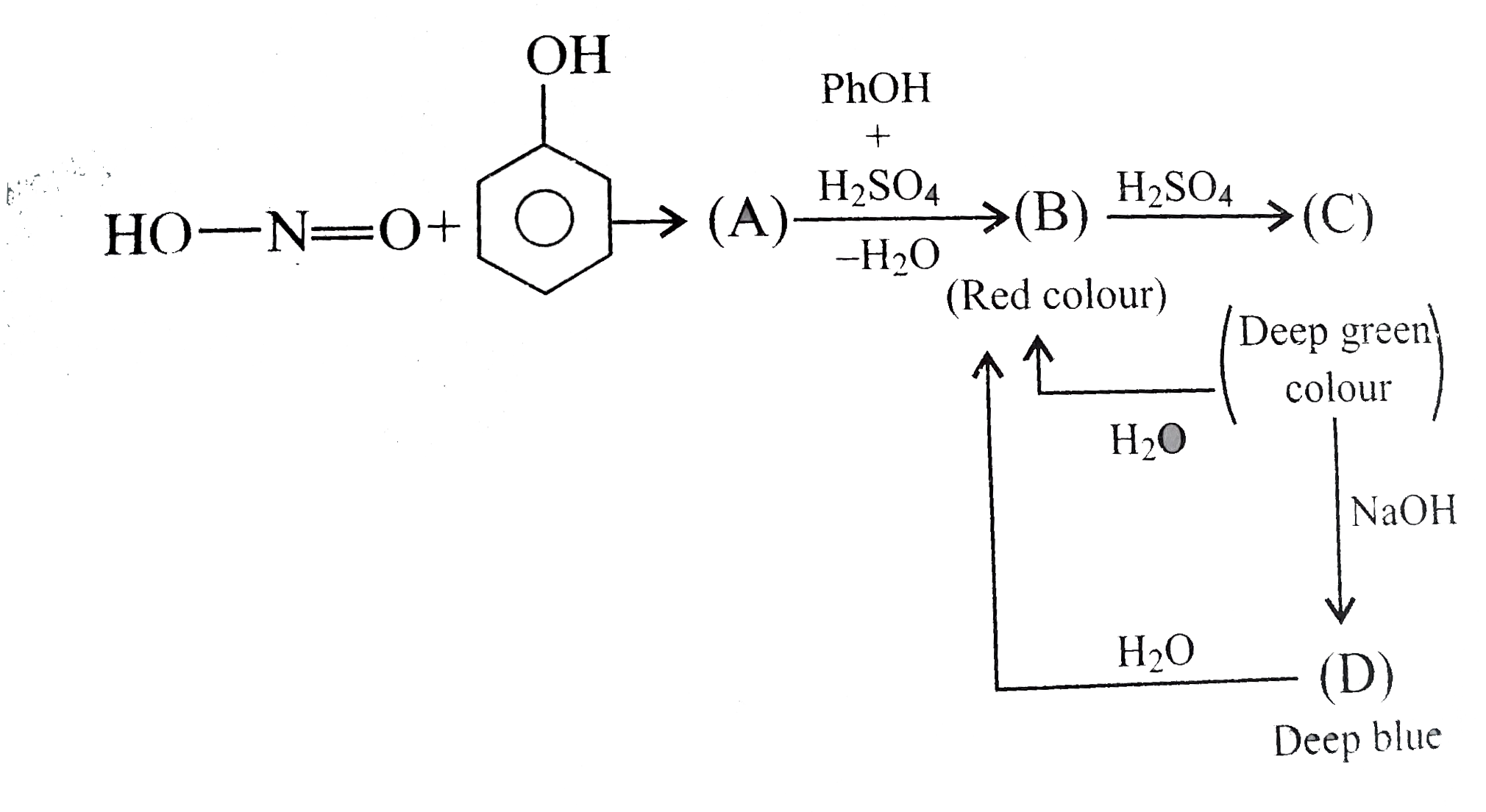The orange colour of dichromate solution changes of blue on heating with alkalies due to the formation of chromate ions.
Step-by-Step Solution:
1. Identify the Compounds:
- The dichromate ion is represented as Cr2O2−7, which is known to have an orange color in solution.
- The chromate ion is represented as CrO2−4.
2. Understand the Reaction:
- When dichromate ions are heated with alkalis (basic conditions), they undergo a transformation to form chromate ions.
- The reaction can be represented as:
Cr2O2−7+2OH−→2CrO2−4+H2O
3. Color Change:
- The dichromate ion (Cr2O2−7) is orange in color.
- The chromate ion (CrO2−4) is typically yellow in color, not blue.
4. Reversible Reaction:
- The conversion between dichromate and chromate ions is a reversible reaction. In acidic conditions, chromate ions can revert back to dichromate ions.
- The equilibrium can be represented as:
Cr2O2−7⇌2CrO2−4
5. Conclusion:
- The statement that the orange color of the dichromate solution changes to blue on heating with alkalis is false. The chromate ions formed are yellow, not blue.
Final Answer:
The statement is false; the color change is from orange (dichromate) to yellow (chromate), not blue.
---
- The dichromate ion is represented as Cr2O2−7, which is known to have an orange color in solution.
- The chromate ion is represented as CrO2−4.
- When dichromate ions are heated with alkalis (basic conditions), they undergo a transformation to form chromate ions.
- The reaction can be represented as:
Cr2O2−7+2OH−→2CrO2−4+H2O
- The dichromate ion (Cr2O2−7) is orange in color.
- The chromate ion (CrO2−4) is typically yellow in color, not blue.
- The conversion between dichromate and chromate ions is a reversible reaction. In acidic conditions, chromate ions can revert back to dichromate ions.
- The equilibrium can be represented as:
Cr2O2−7⇌2CrO2−4
- The statement that the orange color of the dichromate solution changes to blue on heating with alkalis is false. The chromate ions formed are yellow, not blue.
The statement is false; the color change is from orange (dichromate) to yellow (chromate), not blue.
Topper's Solved these Questions
- D AND F BLOCK ELEMENTSBOOK - CENGAGE CHEMISTRY ENGLISHCHAPTER - D AND F BLOCK ELEMENTSEXERCISE - Archives Linked Comprehension
9 Videos
- D AND F BLOCK ELEMENTSBOOK - CENGAGE CHEMISTRY ENGLISHCHAPTER - D AND F BLOCK ELEMENTSEXERCISE - Archives Multiple Correct
8 Videos
- D AND F BLOCK ELEMENTSBOOK - CENGAGE CHEMISTRY ENGLISHCHAPTER - D AND F BLOCK ELEMENTSEXERCISE - Exercises Fill In The Blanks
9 Videos
- COORDINATION COMPOUNDSBOOK - CENGAGE CHEMISTRY ENGLISHCHAPTER - COORDINATION COMPOUNDSEXERCISE - Archives Subjective
18 Videos
- ELECTROCHEMISTRYBOOK - CENGAGE CHEMISTRY ENGLISHCHAPTER - ELECTROCHEMISTRYEXERCISE - Archieves Subjective
35 Videos
Similar Questions
The colour of potassium dichromate is due to
View SolutionThe orange colour of carrot root is due to the presence of
View SolutionThe yellow colour of chromates changes to orange on acidification due to formation of:
View Solution
The red colour of compound (B) is due to the formation of:
View SolutionYellow colour of chromates changes to orange on acidification due to formation of:
View SolutionThe yellow colour solution of Na2CrO4 changes to orange red on passing CO2 gas due to the formation of :-
View SolutionThe prussian blue colour obtained during the test of nitrogen by lassaigne's test is due to the formation of:
View SolutionThe colour of the transition metal ions is due to
View SolutionWhen ammonia is added to cupric salt solution, the deep blue colour is observed it is due to the formation of:
View SolutionBlue colour of blue -green algae is due to
View Solution
